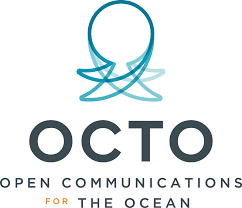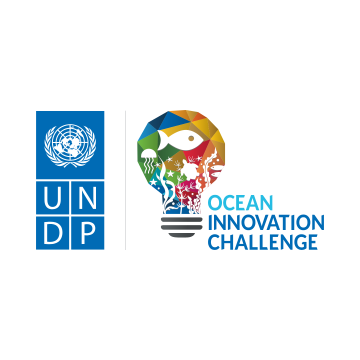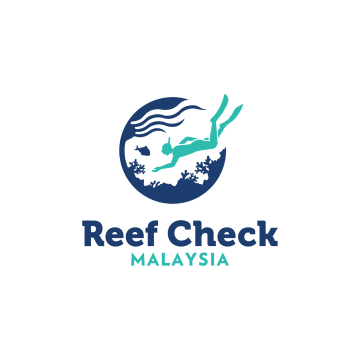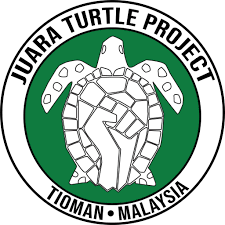
Éxito de la EAE: Los ingredientes de una visita de intercambio de conocimientos entre iguales que tenga repercusión
La isla de San Martín está situada en la parte nororiental del golfo de Bengala (Bangladesh). Es la zona marina protegida declarada más recientemente en el país (2022). Tiene una superficie de 1.743 km2. Se creó para conservar el único arrecife de coral de Bangladesh junto con su biodiversidad marina en general y promover medios de vida sostenibles de las comunidades dependientes.
Las autoridades nacionales se han comprometido con la Lista Verde de la UICN, y el objetivo es añadir Saint-Martin a esta prestigiosa lista de Áreas Protegidas y Conservadas que se gestionan eficazmente y se gobiernan de forma justa.
SEA Success, un proyecto Ocean Innovation Challenge del PNUD, brindó la oportunidad de poner a prueba un enfoque de intercambio de conocimientos para ayudar a las partes interesadas de San Martín a superar algunos de sus retos. SEA es un acrónimo de Scoping(retos específicos del lugar), Exchanging(sobre soluciones experimentadas por pares) y Activating(la aplicación de soluciones adecuadas para superar los retos).
Contexto
Défis à relever
En la isla de San Martín se identificaron numerosas amenazas, como el desarrollo turístico insostenible, la sobrepesca y las prácticas pesqueras destructivas, los residuos plásticos y el aumento de perros asilvestrados. Estos retos deben superarse para alcanzar el estándar de la Lista Verde y demostrar resultados de conservación satisfactorios.
Ubicación
Procesar
Resumen del proceso
El enfoque del éxito de la EAE consistió en realizar una autoevaluación con respecto a la Lista Verde de la UICN, para identificar las lagunas en términos de gobernanza, diseño y planificación y gestión. Se enumeraron temas específicos y se redujeron a dos fundamentales: la conservación de las tortugas y la protección de los arrecifes de coral. Estos temas se seleccionaron teniendo en cuenta la viabilidad de explorarlos en un entorno de intercambio entre pares, y la disponibilidad de soluciones pertinentes existentes en la plataforma PANORAMA y la red de la OCTC. La pertinencia de las distintas soluciones se perfeccionó mediante conversaciones bilaterales en línea con sus proveedores. A continuación, se invitó a los proveedores de soluciones con mayor potencial de adaptación y aplicación en el contexto de la isla de San Martín a un taller de intercambio en la isla. Se decidió entonces que un grupo de interesados clave iría a la isla de Tioman, en Malasia, para aprender sobre gestión de criaderos de tortugas y vigilancia de arrecifes de coral. La visita fue muy impactante.
Bloques de construcción
Actualizar los conocimientos locales
La gestión de los criaderos de tortugas no era del todo nueva para los miembros de la comunidad y las autoridades locales. Proyectos anteriores en la isla de San Martín habían apoyado con éxito actividades de conservación de tortugas financiadas por el PNUD. El Departamento de Medio Ambiente también lleva a cabo iniciativas de incubación de tortugas durante la temporada de cría.
En Tioman, Juara Turtle Project, la organización anfitriona que formó a la delegación de Bangladesh, formada por funcionarios del gobierno y un defensor de la comunidad local, compartió su protocolo de incubación de tortugas. Este protocolo se debatió con los miembros del grupo de conservación de tortugas de la isla de Saint-Martin y se adoptó para mejorar sus prácticas.
Lo aprendido en la visita fue fácilmente transferible, aunque el intercambio de aprendizaje sólo durara una semana, porque los interesados de la isla de San Martín ya tenían un buen conocimiento y práctica de la cría de tortugas. Sólo era cuestión de añadir alguna estructura y proceso a su práctica actual. Aunque, en comparación con Tioman, hay diferencias a nivel de especie; en Bangladesh predomina la tortuga golfina(Lepidochelys olivacea), mientras que en Tioman son más comunes las tortugas verde(Chelonia mydas) y carey(Eretmochelys imbricata). Y hay diferencias en el rango medio de temperaturas.
Además, también aprendieron a proteger los huevos de tortuga de la depredación, sobre todo de los perros asilvestrados, la mayor amenaza para la conservación de las tortugas en la isla. Este último aspecto vino como anillo al dedo, ya que no se esperaba que formara parte de los aprendizajes.
Factores facilitadores
- Conocimientos y práctica previos sobre el tema
- Grupos comunitarios de conservación comprometidos
- En consonancia con las prioridades de las autoridades locales
Transferencia de conocimientos a través de promotores locales y funcionarios clave
Al seleccionar la delegación de la isla de Saint-Martin a la isla de Tioman, nos aseguramos de contar con representantes del gobierno local y de la comunidad. Los representantes del gobierno local fomentan la apropiación de la actividad del proyecto y se muestran así dispuestos a apoyar y orientar el trabajo en su área de jurisdicción. También ayuda a formalizar la adopción de nuevos protocolos.
En cuanto a la conservación de los arrecifes de coral, se formó a un campeón local de la comunidad de la isla de San Martín en la metodología de comprobación de arrecifes. Completó con éxito la certificación en sólo 2 días, porque ya era un excelente buceador -es fotógrafo submarino-, y ya conocía la identificación de especies de corales y peces. Esta formación fue para él una forma de validar sus competencias actuales y acceder a una metodología clara que facilita la transferencia de conocimientos a otras personas.
Factores facilitadores
- Capacidad del campeón local para transferir conocimientos a sus compañeros cuando regrese a su país (ya posee buenos conocimientos sobre el tema o la práctica)
- Campeón local con visión de futuro para el desarrollo de la práctica, que dirija la ejecución de las actividades consiguientes.
Representantes clave de las autoridades locales que tengan la capacidad de debatir los aprendizajes con los miembros de la comunidad local
Lección aprendida
- Los aprendizajes sobre el protocolo para manejar los criaderos de tortugas fueron presentados a los miembros de la comunidad involucrados en estas actividades de conservación. Los representantes de las autoridades habilitaron un espacio de debate sobre el nuevo protocolo que se proponía introducir, y este diálogo abierto permitió convencer a los miembros de la comunidad y adoptar la forma más estructurada de gestionar los criaderos de tortugas en la isla de San Martín.
La Lista Verde de la UICN como marco estratégico
La isla de San Martín ha sido seleccionada por el Departamento Forestal y el Departamento de Medio Ambiente de Bangladesh para someterse al proceso de la Lista Verde de la UICN. Un experto bangladeshí en áreas marinas protegidas llevó a cabo el ejercicio de autoevaluación de la Lista Verde con los principales interesados, y redactó el informe, destacando los puntos fuertes y débiles de la joven área marina conservada. La protección de los arrecifes de coral y la conservación de las tortugas son objetivos clave del plan de gestión de la isla de San Martín.
La visita a Tioman fue decisiva para aportar y reforzar los conocimientos técnicos sobre ambos temas, con el fin de mejorar los resultados de la conservación. El compromiso con la Lista Verde proporciona un marco estratégico que engloba estas actividades específicas y garantiza que se mantengan en el futuro, ya que sirven a una ambición mayor: inscribir el Área Marina Protegida de la Isla de San Martín en la Lista Verde de la UICN.
El experto también desarrolló el plan de acción del sitio, para guiar la mejora hacia el estándar de la Lista Verde. Se incluyen la conservación de las tortugas y la vigilancia de los arrecifes de coral, lo que ayudará a garantizar que los conocimientos adquiridos durante la visita a Tioman se mantengan y se pongan en práctica.
Impactos
- Los grupos comunitarios de la isla de San Martín que dirigen criaderos de tortugas han actualizado sus prácticas con la adopción del protocolo que compartió Juara Turtle Project, una organización de conservación de tortugas de la isla de Tioman.
- El campeón local, formado en la metodología de Reef Check Malaysia, está desarrollando un programa de formación para que los estudiantes de oceanografía y los funcionarios públicos puedan llevar a cabo la vigilancia de los arrecifes de coral de la isla.
Beneficiarios
- Autoridades de la AMP de San Martín
- Instituto de Investigación Oceanográfica de Bangladesh
- Miembros de la comunidad implicados en la conservación de las tortugas
- Operadores turísticos (en el futuro, si el arrecife de coral se mantiene en buen estado de salud)
- Pescadores locales








